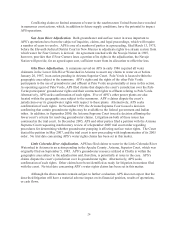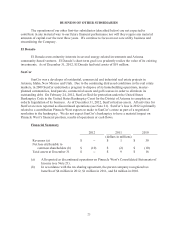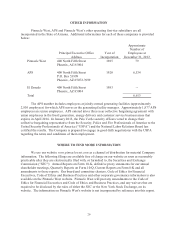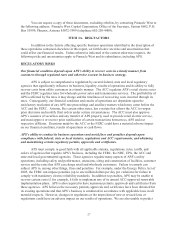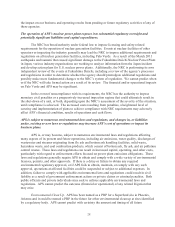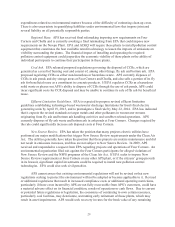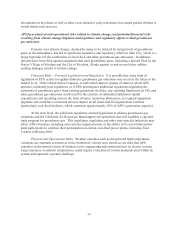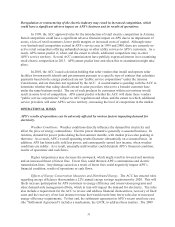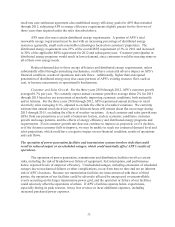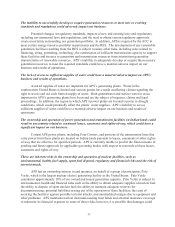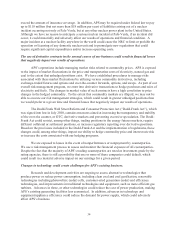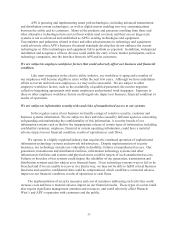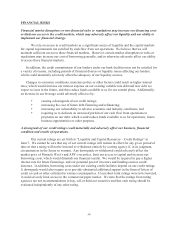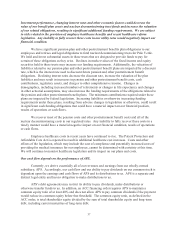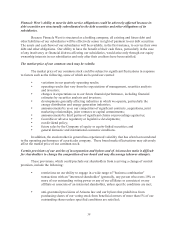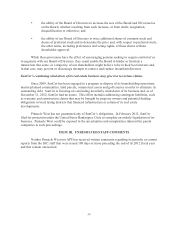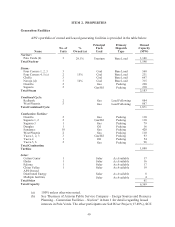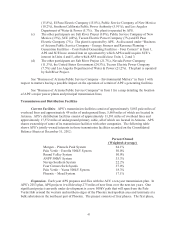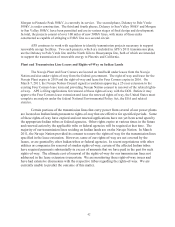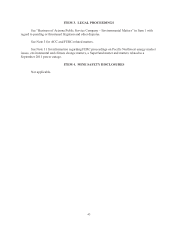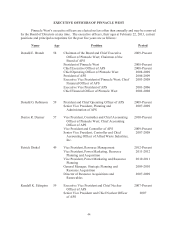APS 2012 Annual Report Download - page 58
Download and view the complete annual report
Please find page 58 of the 2012 APS annual report below. You can navigate through the pages in the report by either clicking on the pages listed below, or by using the keyword search tool below to find specific information within the annual report.34
exceed the amount of insurance coverage. In addition, APS may be required under federal law to pay
up to $118 million (but not more than $18 million per year) of liabilities arising out of a nuclear
incident occurring not only at Palo Verde, but at any other nuclear power plant in the United States.
Although we have no reason to anticipate a serious nuclear incident at Palo Verde, if an incident did
occur, it could materially and adversely affect our results of operations and financial condition. A
major incident at a nuclear facility anywhere in the world could cause the NRC to limit or prohibit the
operation or licensing of any domestic nuclear unit and to promulgate new regulations that could
require significant capital expenditures and/or increase operating costs.
The use of derivative contracts in the normal course of our business could result in financial losses
that negatively impact our results of operations.
APS’s operations include managing market risks related to commodity prices. APS is exposed
to the impact of market fluctuations in the price and transportation costs of electricity, natural gas and
coal to the extent that unhedged positions exist. We have established procedures to manage risks
associated with these market fluctuations by utilizing various commodity derivatives, including
exchange-traded futures and options and over-the-counter forwards, options, and swaps. As part of our
overall risk management program, we enter into derivative transactions to hedge purchases and sales of
electricity and fuels. The changes in market value of such contracts have a high correlation to price
changes in the hedged commodity. To the extent that commodity markets are illiquid, we may not be
able to execute our risk management strategies, which could result in greater unhedged positions than
we would prefer at a given time and financial losses that negatively impact our results of operations.
The Dodd-Frank Wall Street Reform and Consumer Protection Act (“Dodd-Frank Act”), which
was signed into law in July 2010, contains measures aimed at increasing the transparency and stability
of the over-the counter, or OTC, derivative markets and preventing excessive speculation. The Dodd-
Frank Act could restrict, among other things, trading positions in the energy futures markets, require
different collateral or settlement positions, or increase regulatory reporting over derivative positions.
Based on the provisions included in the Dodd-Frank Act and the implementation of regulations, these
changes could, among other things, impact our ability to hedge commodity price and interest rate risk
or increase the costs associated with our hedging programs.
We are exposed to losses in the event of nonperformance or nonpayment by counterparties.
We use a risk management process to assess and monitor the financial exposure of all counterparties.
Despite the fact that the majority of APS’s trading counterparties are rated as investment grade by the
rating agencies, there is still a possibility that one or more of these companies could default, which
could result in a material adverse impact on our earnings for a given period.
Changes in technology could create challenges for APS’s existing business.
Research and development activities are ongoing to assess alternative technologies that
produce power or reduce power consumption, including clean coal and coal gasification, renewable
technologies including photovoltaic (solar) cells, customer-sited generation (solar) and efficiency
technologies, and improvements in traditional technologies and equipment, such as more efficient gas
turbines. Advances in these, or other technologies could reduce the cost of power production, making
APS’s existing generating facilities less economical. In addition, advances in technology and
equipment/appliance efficiency could reduce the demand for power supply, which could adversely
affect APS’s business.


